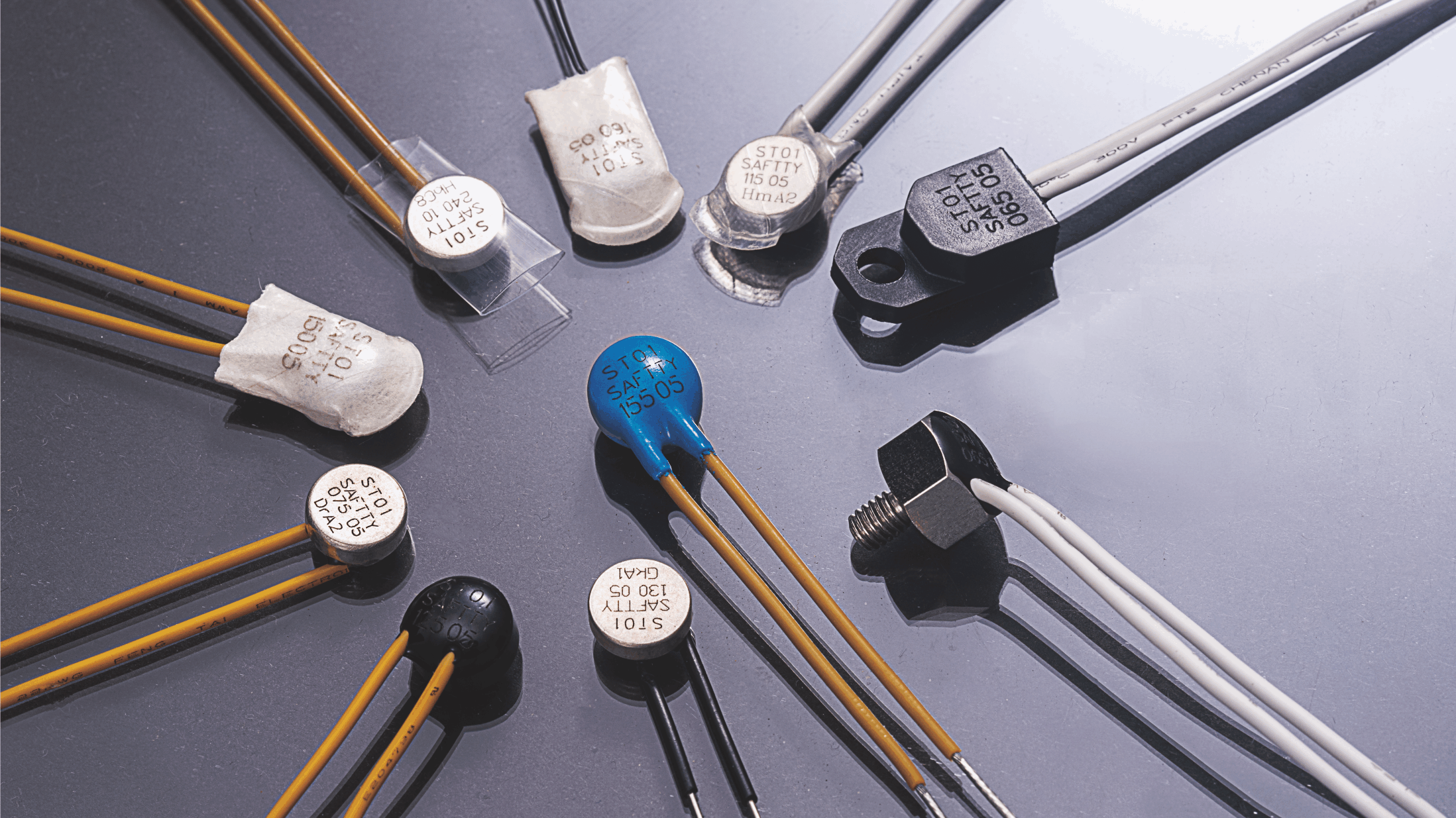Thermal switches are temperature-sensitive devices that open or close electrical circuits based on the temperature of the surrounding environment. They are widely used for controlling temperature in appliances, industrial systems, automotive applications, and more. Understanding the different types of thermal switches can help in selecting the right one for specific applications.
1. Bimetallic Thermal Switches
Definition
Bimetallic thermal switches use a bimetallic strip that bends or snaps when exposed to a specific temperature. This mechanical motion either completes or interrupts an electrical circuit.
Key Features
Operation: Based on the thermal expansion properties of two bonded metals with different coefficients of expansion.
Reset Type: Available in manual reset or automatic reset options.
Durability: Long lifespan due to robust mechanical construction.
Applications
Household appliances like irons and toasters.
HVAC systems for temperature control.
Automotive applications, such as engine overheating protection.
2. Liquid-Filled Thermal Switches
Definition
These switches use liquid expansion to activate the switching mechanism. The liquid's volume changes with temperature, exerting pressure on a diaphragm or piston that operates the switch.
Key Features
Precise Control: Suitable for applications requiring accurate temperature regulation.
Temperature Range: Can operate over a wide temperature range.
Slow Response: Typically slower compared to bimetallic switches.
Applications
Industrial equipment requiring precise temperature control.
Boilers and water heaters.
Refrigeration systems.
3. Electronic Thermal Switches
Definition
Electronic thermal switches rely on temperature sensors like thermistors or thermocouples, coupled with electronic circuitry, to detect and control temperature.
Key Features
Customization: Can be programmed for specific temperature ranges and behaviors.
Accuracy: High precision in temperature sensing and switching.
Complexity: Require power and more sophisticated design.
Applications
Advanced HVAC systems.
Electronic devices such as computers and smartphones.
Industrial automation requiring precise temperature control.
4. Thermostatic Expansion Switches
Definition
These switches use a thermostatic element, such as a gas-filled bulb or capsule, to detect temperature changes and activate the switch.
Key Features
Versatility: Effective for both heating and cooling applications.
Environmental Resilience: Can operate in harsh environments.
Applications
Refrigeration and air conditioning systems.
Industrial cooling units.
Automotive air conditioning systems.
5. Reed Thermal Switches
Definition
Reed thermal switches use a magnetic reed mechanism that reacts to temperature changes, either through direct heating or by detecting temperature-induced changes in nearby magnetic fields.
Key Features
Fast Response: Quick reaction to temperature changes.
Compact Size: Suitable for small devices and limited spaces.
Applications
Portable electronics.
Medical devices requiring compact temperature control.
Communication equipment.
6. Snap-Action Thermal Switches
Definition
These switches employ a snap-action mechanism that rapidly opens or closes the circuit at a specific temperature threshold.
Key Features
Rapid Response: Ideal for applications needing instant temperature-driven action.
High Current Capacity: Can handle significant electrical loads.
Applications
Safety devices in household appliances.
Industrial machinery to prevent overheating.
Heating elements in water heaters.
7. Capillary Thermal Switches
Definition
Capillary thermal switches use a capillary tube filled with a liquid or gas that expands and contracts based on temperature changes, triggering the switch.
Key Features
Remote Sensing: The capillary tube allows the sensing element to be placed away from the switch.
Wide Range: Effective across diverse temperature ranges.
Applications
Industrial ovens and kilns.
Heat exchangers.
Food processing equipment.
8. Resettable Thermal Switches
Definition
These switches are designed to automatically reset once the temperature returns to the normal range or require manual intervention to reset after activation.
Key Features
Automatic Reset: Reverts to its original state without manual input.
Manual Reset: Requires user action to restore functionality, ensuring safety in critical systems.
Applications
Overtemperature protection in motors and transformers.
Circuit breakers in industrial systems.
Home appliances requiring safety shut-off mechanisms.
Thermal switches are essential components for temperature control and protection in a wide array of applications. The choice of a thermal switch depends on factors such as temperature range, response time, durability, and precision requirements. For example, bimetallic and snap-action switches are ideal for cost-effective, fast-acting applications, while electronic and liquid-filled switches excel in environments demanding high precision. Understanding the different types and their unique characteristics ensures optimal performance, safety, and efficiency in various systems.













 中文
中文 English
English Deutsch
Deutsch Italiano
Italiano 한국어
한국어 にほんご
にほんご


